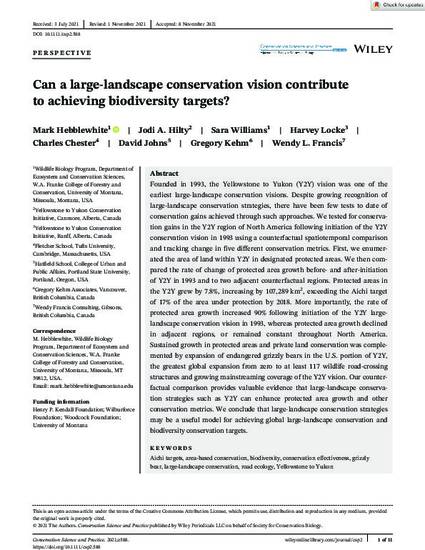
- Urban community development,
- Conservation
Founded in 1993, the Yellowstone to Yukon (Y2Y) vision was one of the earliest large-landscape conservation visions. Despite growing recognition of large-landscape conservation strategies, there have been few tests to date of conservation gains achieved through such approaches. We tested for conservation gains in the Y2Y region of North America following initiation of the Y2Y conservation vision in 1993 using a counterfactual spatiotemporal comparison and tracking change in five different conservation metrics. First, we enumerated the area of land within Y2Y in designated protected areas. We then compared the rate of change of protected area growth before- and after-initiation of Y2Y in 1993 and to two adjacent counterfactual regions. Protected areas in the Y2Y grew by 7.8%, increasing by 107,289 km2, exceeding the Aichi target of 17% of the area under protection by 2018. More importantly, the rate of protected area growth increased 90% following initiation of the Y2Y large-landscape conservation vision in 1993, whereas protected area growth declined in adjacent regions, or remained constant throughout North America. Sustained growth in protected areas and private land conservation was complemented by expansion of endangered grizzly bears in the U.S. portion of Y2Y, the greatest global expansion from zero to at least 117 wildlife road-crossing structures and growing mainstreaming coverage of the Y2Y vision. Our counterfactual comparison provides valuable evidence that large-landscape conservation strategies such as Y2Y can enhance protected area growth and other conservation metrics. We conclude that large-landscape conservation strategies may be a useful model for achieving global large-landscape conservation and biodiversity conservation targets.
Copyright (c) 2021 The Authors
This work is licensed under a Creative Commons Attribution 4.0 International License.
